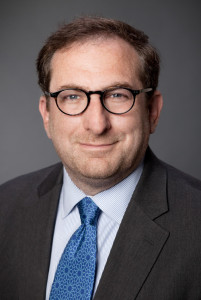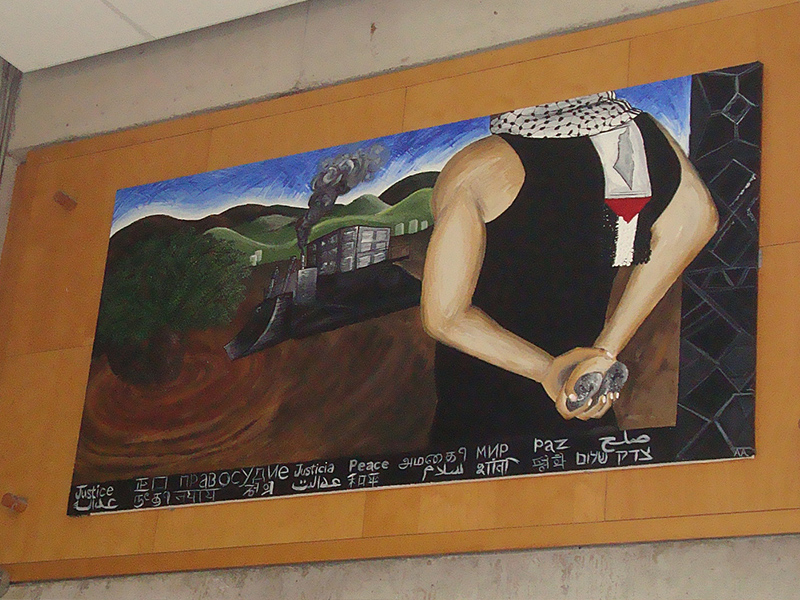My views on the controversy surrounding the Palestinian Roots mural in the York University Student Centre are clear and simple. First, I believe the art has offended many York community members – both inside and outside the Jewish community – and these very real concerns have not been adequately addressed by the leadership of the student centre. The centre is a gathering place for all York students – not just for some, or those who subscribe to a particular view of Middle East politics.
Second, the students who run the centre have the right to decide what art is put on its walls, subject to legal limits (whether it be the Human Rights Code, Criminal Code, or York’s own Code of Students Rights and Responsibilities).
Third, universities ought not become places of academic boycotts, attempts to silence debate or efforts to shout down those who disagree or make any community members unsafe.
“SUPPORT FOR THE JEWISH COMMUNITY AND JEWISH STUDENTS AT YORK REQUIRES SUPPORT FOR FREEDOM OF EXPRESSION, AND VICE VERSA”
The issue of artwork in York’s student centre appears to pit support for the Jewish community and Jewish students at York against support for freedom of expression. This characterization of the issue is inaccurate and unhelpful. Support for the Jewish community and Jewish students at York, in my view, requires support for freedom of expression, and vice versa.
Throughout history, Jewish culture and community have thrived in settings with robust and effectively protected freedom of expression. By the same token, anti-Semitism flourishes where, and to the extent that, expressive freedom is curtailed. Jewish law and thought have been shaped over centuries by debate, discussion and dissent, not by disengagement or doctrinaire truths developed by some and imposed on all.

What I find most remarkable about those who have purported to convey the “truth” of what is going on at York in relation to the student centre artwork is the conviction they demonstrate that they have nothing at all to learn from others, especially those who disagree with them. Nothing, in my view, could stray further from Jewish traditions or what makes Toronto’s – and Canada’s – Jewish community so vibrant and strong, and what makes me so proud to be a part of these communities.
People who think they have nothing left to learn, who demonstrate no humility or interest in why other thoughtful and engaged people disagree with them, are precisely the people who are most unsettled by universities. Universities are premised on the proposition that we all have something to learn, new perspectives to consider and old perspectives to reconsider, and that the best way to do this is in an inclusive atmosphere of respect for others and open and free debate, whether reflected in a class, lecture, article or piece of art.
Before the issue became of interest to the media, when it was primarily of interest only to community members, I heard a range of views about the art itself. Some saw it as an incitement to violence, as it appears not just to depict a Palestinian about to throw a rock at an Israeli outpost but to glorify doing so. Others I spoke with saw it as an expression of the self-destructive impulse of a young person about to engage in senseless violence. Still others saw it as an unfair and damaging portrayal of Palestinians as rock-throwers rather than a community defined by its culture, shared hopes and values.
Which perspective is “true”? The answer is easy. They all are – and there are many other interpretations of the art I no doubt haven’t yet heard. Art is often created for the purpose of provoking thought and discussion – even uncomfortable thought and discussion.

While all this explains my support for the right of the York student centre to display the art in question, I should also explain why I believe the art should not continue to be displayed.
First, since the contest under which the mural was displayed specified a specific two-year term which has now passed, to continue to display the mural at this point, after the leadership of the student centre have become clearly aware that some York students find the art offensive and hurtful, appears to reflect a specific intention to see some York students as unwelcome in their own centre. Whether or not intended, that is how reasonable community members would likely view it, and this perception is corrosive to the values of inclusion and community that ought to animate the student centre.
READ: WATERLOO STUDENTS VOTE NO TO BOYCOTT OF ISRAELI UNIVERSITIES
While a university cannot thrive where free and open expression is undermined, similarly, it cannot thrive where members of the university community feel unwelcome and marginalized. Navigating between these shoals is challenging work – and it is exactly the challenge universities were created to do.
If we can successfully resist those who would prefer to see complex reality as black/white, love/hate, pro/anti, I have no doubt we will come out of these kinds of discussions with a stronger and more inclusive university, and a stronger and more inclusive Jewish community.
Lorne Sossin is dean and professor at Osgoode Hall Law School, and presidential adviser on community engagement at York University.






